Cash games are often described as the most difficult form of poker. Although not everyone agrees on this point it’s hard to deny the fact that they are the most complex from the strategic point of view. You’re almost always playing with 100 or more big blinds effective, which makes every decision you make not just more involved but also much more significant.
Despite this, many pros are attracted to cash games because they offer a stable and consistent stream of income (if you’re a winning player of course). They aren’t nearly as volatile as tournaments and they also provide you with more freedom to play whatever your poker schedule may be.
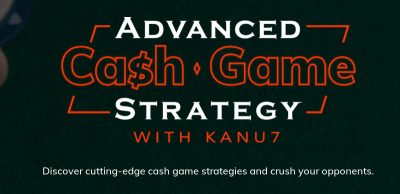
The question is: how do you become a winning player and stay one as you move up through the stakes?
That’s where Upswing’s Advanced Cash Game Strategy course comes into play. Created by Alex ‘Kanu7’ Millar, this is an extensive, very intensive, and very useful course for all those looking to take their cash gameplay to the next level.
Like the majority of Upswing courses, this one isn’t aimed at absolute beginners. While Advanced Cash Game Strategy would definitely benefit players across the board, those with solid fundamentals are likely to get most out of it.
To summarise the main ideas behind this review and what to expect from this course:
Advanced Cash Game Strategy is a world-class level NL course with 36 hours of content created by the notorious online crusher Kanu7. Ideal for seasoned cash players breaking into mid or high stakes, it includes extensive solver ranges, high-level cash game theory and comprehensive hand reviews. Our rating: 8.6/10.
Advanced Cash Game Strategy in a Nutshell
Kanu7's course contains 36 hours of footage and is aimed primarily at 6-max cash games, which is the most popular online format. It is split into four major sections, namely:
- Cash Game Fundamentals
- Preflop
- Postflop
- Play & Explains
Before you jump into it, you’re probably best off watching the short introductory video. In it, Kanu7 explains the course structure, how you’re supposed to watch it, and offers some useful guidelines that will definitely help you make most out of it.

For the most part, the course has been designed to be watched in order it is presented. As Millar explains, you can leave some of the videos from the Fundamentals section for later and only watch them as you progress to Postflop, but this is more a matter of preference.
Before moving onto particular sections of Advanced Cash Game Strategy, it’s worth mentioning that the overall quality of the presentation is very good. Although Kanu7 is an advanced player who thinks on about poker on a very high level, he manages to present his lessons in a way that’s engaging and relatively easy to keep up with.
This is an important quality in a course such as this. Having knowledge about something and being able to transfer it to others are two completely different things. Many top players aren’t very good in the latter segment. However, Millar definitely has talent for coaching.
Cash Game Fundamentals
In the first section of the course, Millar focuses on some general considerations about cash games. These videos serve as a nice way to introduce later lessons and are definitely worth watching even if some of them may seem somewhat abstract.
The discussion about GTO vs. exploitative play is particularly interesting. Kanu7 takes time to go through both approaches and explains how GTO isn’t always the best way to go, especially in multi-way pots.
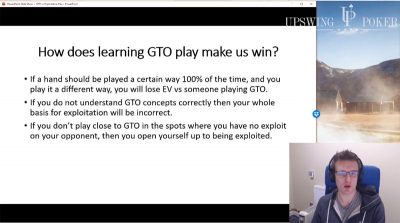
Several other videos in this section focus on the theory of betting and contain heaps of valuable information. Poker is all about betting – when you should bet, how often you should do it in particular spots, and how to size your bets properly.
Millar suggests some fairly simple and easy-to-remember approaches that work very well. The whole idea behind this approach is creating a strategy that you can actually remember. This is definitely refreshing to see as there are way too many strategies out there that may be mathematically exact but are virtually impossible to remember, which renders them almost useless to the average player.
The final video in this section that you should definitely watch is the Introduction to Private Solver. In it, Millar explains the software he is using in the Postflop section of Advanced Cash Game Strategy. It’s a private piece of software that’s not available to the general public so you’ve wouldn't have had a chance to see it in action before. Thus, you should check out the video as this will make it easier to keep up with the lessons later in the course.
Preflop play
The Preflop section of Advanced Cash Game Strategy offers plenty of value on its own. First of all, you’re provided with the full analysis of preflop ranges for 6-max games for all positions. These charts alone are quite expensive and the fact you’ll be getting them as a part of this course is a big selling point.
One slight downside is that these ranges can’t be readily downloaded. However, you’ll be able to access them on the site through the special viewer app so as long as you have an internet connection, you can always check them out.
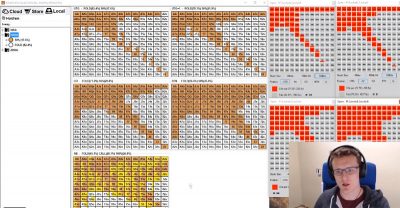
After the initial couple of videos discussing starting and opening ranges in different positions, the course covers all sorts of different scenarios, such as:
- Playing in the blinds vs. an open
- Playing in position vs. an open
- Playing vs. 3-bet in and out of position
- Playing vs. 4-bets
- SB vs. BB
A majority of ranges have been calculated using MonkerSolver and using the default depth of 100 big blinds effective. However, Millar does spend some time looking into scenarios where effective stacks are deeper (200 bb) in terms of how it influences your opening sizes and your approach in different scenarios.
Although these videos are quite theoretical and you won’t see much actual play in them, Kanu7’s methodical approach makes it very easy to keep up. He spends plenty of time explaining some of the more important spots that most players are likely to struggle with and explains the logic behind the numbers provided by the software.
Postflop play
Not surprisingly, the Postflop section of Upswing’s Advanced Cash Game Strategy Course is much more comprehensive. Once the preflop stage is over, things become much more complex, especially in cash games, where deep stacks make almost every decision very important to your bottom line.
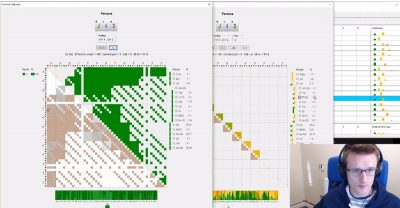
In this section, Kanu7’s private solver comes into play as well as it is used in many of the videos. So, if you initially skipped the video from the introduction where he explains the basics of his software, you should probably check it out before proceeding to the preflop part.
This section of the course is broken into four main groups.
In position vs. Big Blind
As the name suggests, this area covers one of the most common situations – how to play when you’re defending in the big blind once the flop is out and what to do when you’re the original raiser. Millar covers several interesting and useful topics here.
One of the more interesting videos in this section is the one discussing donking on the flop. As you may know, the expression is used to describe an action of betting “out of turn”, i.e. betting first when the flop comes instead of playing in flow and checking to the raiser.
Although donking was considered a bad idea some years ago, there are now more and more players who believe it can be an effective part of your strategy. Kanu7 has some interesting thoughts on this concept and how you might go about adding it to your playbook.
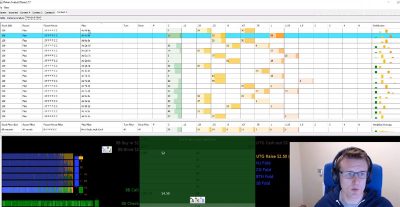
The rest of the videos in this particular section are pretty much what you’d expect, covering c-bet and playing against a c-bet, as well as check-raising. Without going into too much detail about what you’ll find inside these videos, it suffices to say Millar takes plenty of times running many simulations using his private solver to demonstrate a number of relatable scenarios and suggest effective strategies.
Postflop: Turn
The section covering turn play is split into several subgroups, like:
- Donking
- Turn barrels
- Probes
- Delayed C-betting
After watching the first part of the Postflop section, you’ll probably be used to Millar’s software and should have much easier time keeping up with his explanations. It is quite important to make sure you understand what different abbreviations and letters stand for as that will give you a much better idea of what’s being explained on the screen.
Like in the rest of the videos, Kanu7 suggests some simplified strategies that are very effective and yet not impossible to remember and follow. You’ll still need to take quite a bit of time going through the videos and making notes on what’s being explained to make most out of it but he does a great job of breaking things down to the point where they seize to be abstract notions and become actually implementable strategies.
Blind vs. Blind
Blind vs. blind play is an important aspect of cash games and the one that’s often neglected. Thus, it’s nice to see that Millar has taken time to create an entire module covering this particular area in detail. If you’ve ever felt like you’re uncertain as to what to do in certain blind on blind scenarios, which will likely be the case for most poker players, these videos should help clarify many of these decision points.
You’ll find explanations and strategies for both positions, i.e. small and big blind alike. I do think the small blind play is particularly interesting as that’s one segment that I feel often doesn’t get enough attention in various coaching programs.
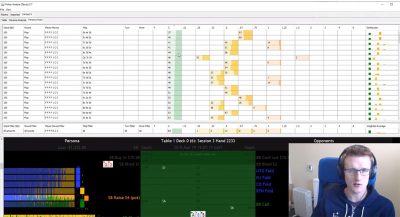
Lessons are broken down by different important factors, such as board structures and different actions (playing vs. c-bet, dealing with checks, handling check-raises, etc.). The sheer amount of material covering blind vs. blind play is quite impressive and this is worth mentioning.
3-bet Pots
The final segment of the Postflop section covers 3-bet pots. It is divided into two large groups, namely in position and out of position situations. Inside each of these groups, you’ll find a number of videos covering more specific scenarios for positional adjustments and hand selection on:
- Connected flops
- Disconnected flops
- Other flop types
Not surprisingly, there is a lot of material to go through here. 3-bet pots are very important in cash games as your handling of these situations can have a huge impact on your bottom line. While there is no simple strategy that you can learn quickly to master 3-bet pots, Millar once again does a great job of explaining all sorts of scenarios in a very clear and relatable manner.
No River Section?
One area that’s noticeably missing from Upswing’s Advanced Cash Game Strategy is river play. One would fully expect to find it in the Postflop section but it’s nowhere to be found. How come?
The reasoning behind leaving out river play is actually explained in the resources’ section of the course. Namely, Millar felt that the river alone was such a huge area that trying to come up with software calculations for different scenarios just wasn’t feasible. There are too many moving parts to come up with exact numbers.
This isn’t to say that you shouldn’t be studying and improving your river strategy, of course. However, if you have other segments of the game handled, you’ll usually get to the river with a pretty clear plan. So, while certain adjustments here are still useful, they are usually not as crucial if your play on previous streets was correct.
Play & Explains
Like most other courses provided by Upswing, Kanu7's course also contains a Play & Explain section. As always, this is a segment where you’ll find actual hands broken down to the smallest details and analyzed with the view on strategies and adjustments discussed throughout the course.
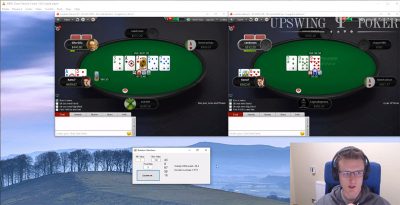
You’ll find eight videos in this section of the course, all containing Kanu7’s 500NL Zoom sessions. These videos aren’t just a great resource to really round up your newly acquired knowledge but are actually quite interesting to watch on their own. Seeing how Millar actually thinks about hands in real time and how he goes about his decision making process is definitely worth your study time.
Summary: Is Advanced Cash Game Strategy Worth the Money?
When you’re looking into buying a poker coaching program, you’re obviously looking to get your money’s worth. With the fairly high price-tag of $999, it’s perfectly normal to want to know if the money you invest will actually pay off.
The fact that you’ll get preflop sheets for various stack depths (50, 100, and 200 big blinds) is a huge selling point. These sheets alone are worth quite a lot and aren’t easy to get by and they’ll definitely do a lot for your game.
Beyond this, Advanced Cash Game Strategy is a truly comprehensive and methodical course that offers excellent opportunities to improve your play. If you’re wondering if you should buy it to play NL20, the answer is – probably not. There are much cheaper and much simpler courses out there that will help you beat those stakes. See our poker training sites review page for some examples of those.
However, once you get to NL200 and beyond, games start to get really tough. You’ll struggle to find players who make big mistakes – and even if they come around, they usually don’t last very long. So, it’s all about who’s better at recognizing and exploiting small leaks.
And that’s where Advanced Cash Game Strategy by Kanu7 really delivers. Millar breaks the game down street by street, situation by situation, and provides the kind of insight that will give you all you need to spot these small leaks and also fix the ones you might have in your own game.
As for the price tag, at $999 ($949 using coupon code Advanced50) it’s really not that high for medium and high stakes players. Giving up a few buy-ins for dozens of hours’ worth of high level strategy is definitely worth it. If you take the time to absorb the knowledge provided in this course and really apply it to your play, Advanced Cash Game Strategy will pay itself off many times over.
Click here to enroll in Advanced Cash Game Strategy by Kanu7 and save $50 using code Advanced50.
